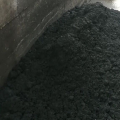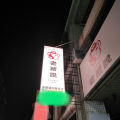|
|
|
While more bushels of corn may be a boon to the pocketbook, are they harming the soil? Not really, according to Emerson Nafziger, Extension agronomist and professor at University of Illinois. “The removal of micronutrients is very small in any crop,” he says. “In my experience we don't see nutrient deficiencies any more often in corn following corn than in corn following soybeans, with the possible exception of nitrogen(N). Reduction of micronutrients in corn following corn has been speculation, but there hasn't been good proof.” The amount of phosphorus (P) in corn stalks is small to begin with, as well as the amount of potassium (K). Reapplication of those nutrients isn't necessary every year, even with a corn-soybean rotation. “Reapplication of P and K depend on what you've put on in previous years, and on soil tests,” says Nafziger. In fact, many growers may not reapply P and K every year, since the biological breakdown of stalks doesn't tie them up like it does N.” One effect on soil with continuous corn comes from the larger amount of N needed, since N is applied every year and not just to the corn crop when corn is rotated with soybeans. “Nitrogen fertilizer has an acidifying effect, bringing pH levels down over years,” says Nafziger. “You will have to apply lime on continuous corn a bit more often than corn following soybeans, but in better soils that might mean every four years instead of every six.” P and K applications won't change a lot [with corn following corn],” says Gyles Randall, professor and soil scientist at the University of Minnesota Southern Research and Outreach Center. “When based on soil tests, the same rate of those nutrients would be applied whether it's corn following corn or corn following soybeans. Even if there are real high levels of corn production, it's still not a big deal.” As far as other nutrients are concerned, “Farmers should pay particular attention to zinc and sulfur in corn,” says Randall. “Soybeans seldom respond to additions of zinc or sulfur. Zinc levels can be determined by soil testing. With sulfur, it's more of an issue of looking for potential deficiency.” Sulfur is necessary for the production of chlorophyll, amino acid and vitamins. Today's high corn yields remove 8-10 lbs. more of sulfur than average yields, says Dan Froehlich, U.S. agronomy manager, Mosaic Company. If sulfur is low, corn won't be as tall or as dark green. To check for sulfur deficiencies, try comparing field strips with vs. without sulfur, says Randall. If it makes a difference, make that a part of your regular fertilizer program. “This is something farmers should practice regardless of what they plant, but deficiencies could rear their heads more frequently when planting corn following corn,” he says. Fifty to 86% of the soil samples from the central and eastern Corn Belt typically test low to medium in zinc, says Froehlich. “Zinc deficiencies are expected to become more common in the second and third years of continuous corn, as zinc demand exceeds the soil's ability to supply it quickly enough.” According to Froehlich, a 180-bu./acre corn crop only requires 0.45 lbs. of zinc, but zinc must be applied at 4-8 lbs./acre in dry blends to ensure the plant roots can take up the zinc needed. “Incorporation of zinc with higher-volume fertilizers containing nitrogen and phosphorus allows lower levels of zinc (1-2 lbs./acre)to be applied and increases the root interception by 12-14 fold,” he says. Continuous corn does not greatly affect the soil. It's more an issue of maintaining the soil, which is something that should be done no matter what crop is planted. Using tillage systems that minimize erosion is a good start, says Randall. “In managing the soil, the bottom line is that corn on corn doesn't have a huge effect on soil nutrients,” Randall adds. What continuous corn does offer is replacement of organic matter. “Planting corn following corn can build the organic carbon level of the soil (over the spread of years). One can't do that with a corn-soybean rotation,” he says. |
|


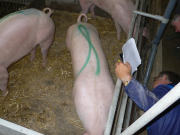
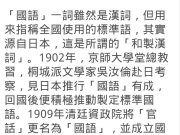
![越南非洲豬瘟疫苗蒙陰影 上百豬隻接種後死亡[轉貼]](data/attachment/block/3e/3e723490e252eebc3bc1a403febd226e.jpg)
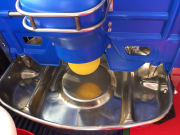
![[轉貼]從上市9頭到14頭 -- 我的養豬專業養成之路。](data/attachment/block/3c/3c17fd6b5c1b8cff34fdc7342238e082.jpg)
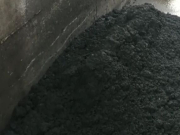
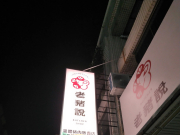
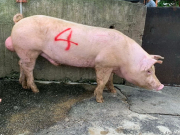
![[轉貼]這個倒霉王國,因為一隻老鼠慘遭滅國 .....](data/attachment/block/3f/3ffb7b6b8ec14613dc077bdd7603e3a5.jpg)
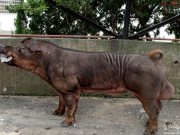
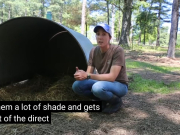


 IP卡
IP卡 狗仔卡
狗仔卡 發表於 2008-2-1 20:48:37
發表於 2008-2-1 20:48:37
 提升卡
提升卡 置頂卡
置頂卡 沉默卡
沉默卡 喧囂卡
喧囂卡 變色卡
變色卡 搶沙發
搶沙發 千斤頂
千斤頂 顯身卡
顯身卡
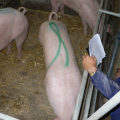
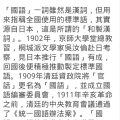
![越南非洲豬瘟疫苗蒙陰影 上百豬隻接種後死亡[轉貼]](data/attachment/block/d2/d2539d8909b33105a4f3e3b9b2e8a659.jpg)
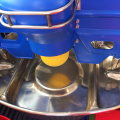
![[轉貼]從上市9頭到14頭 -- 我的養豬專業養成之路。](data/attachment/block/81/819f9b837f86a7e00498f8d95b8b9176.jpg)
